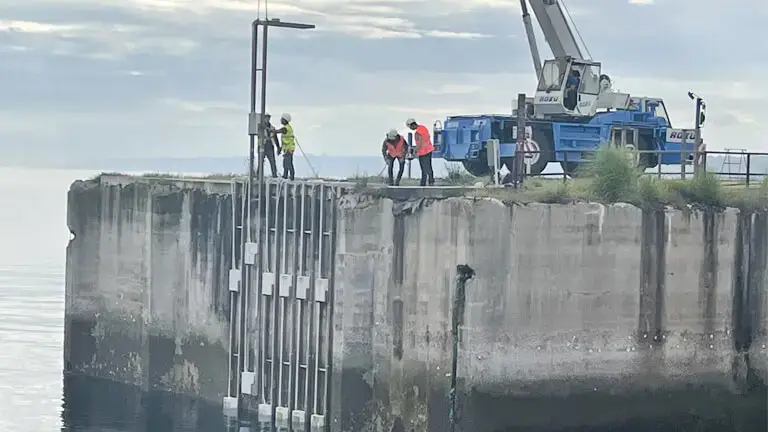Why We Chose a Marine Environment to Test Concrete Durability – And What Krystaline Add1 Revealed

Marine environments are some of the harshest conditions concrete can face
High concentrations of chlorides and sulfates in seawater aggressively penetrate concrete, accelerating corrosion of embedded steel and compromising structural integrity. But that’s exactly why we chose this setting—to test Krystaline C-S-H admixture under the most demanding real-world conditions.
Seawater isn’t the only challenge. Porous concrete provides an ideal surface for marine organisms such as algae, mollusks, barnacles, and bacteria to colonize. These organisms not only cause physical surface damage but also contribute to chemical changes that lower concrete’s alkalinity and promote long-term deterioration. Krystaline C-S-H admixture works by reducing surface porosity, creating a much less hospitable environment for these biological intrusions.
In partnership with a leading Spanish construction company, we initiated a five-year study at the Port of Musel in Gijón. Multiple concrete samples were embedded with sensors to monitor corrosion-related parameters, including corrosion current density (icorr), corrosion potential (Ecorr), and overall corrosion rate (vcorr). Even though the testing is ongoing, early results clearly demonstrate that Krystaline C-S-H admixture significantly improves resistance to marine corrosion.
Independent laboratories in Kuwait and the United States conducted Rapid Chloride Permeability Tests (RCPT), with impressive results. Krystaline C-S-H admixture -treated concrete showed a 30.9% reduction in chloride permeability in Kuwait and a 28.4% reduction at 56 days in the U.S. Additionally, the rate at which resistance improved during hydration was 137% greater than that of untreated concrete. This means Krystaline C-S-H admixture -treated concrete doesn’t just resist chloride—its performance improves over time.
Sulfate attack, which causes expansive reactions within concrete, is yet another marine hazard. In testing by Spain’s Eduardo Torroja Institute (IETcc), Krystaline C-S-H Admixture -treated concrete maintained 68.8% higher compressive strength than sulfate-resistant reference concrete after 106 days of exposure. Mass loss and dimensional change were also substantially lower, and damaging ettringite formation was completely absent in the Krystaline samples.
Perhaps most impressively, Krystaline C-S-H admixture demonstrated strong self-healing capabilities. In a 2023 study conducted in Chile, cracks up to 0.7 mm in width were completely sealed in as little as 10 days under hydrostatic pressure. In all cases, the flow of water was drastically reduced or eliminated, confirming the product’s ability to restore water tightness without external intervention.
Krystaline C-S-H admixture is already being used in demanding marine and water infrastructure projects around the world. From the Distrito Digital in Alicante, to luxury resorts in South Africa, to underwater fish farming docks in the Canary Islands, and even underwater pour applications in Poland and Spain—our technology has proven its strength in the field.
By choosing a marine environment, we subjected our product to one of the toughest durability challenges in construction. The results speak for themselves. Krystaline C-S-H admixture doesn’t just waterproof concrete—it enhances structural performance, extends service life, and even helps concrete repair itself.
Recent Posts
Compartir este artículo
